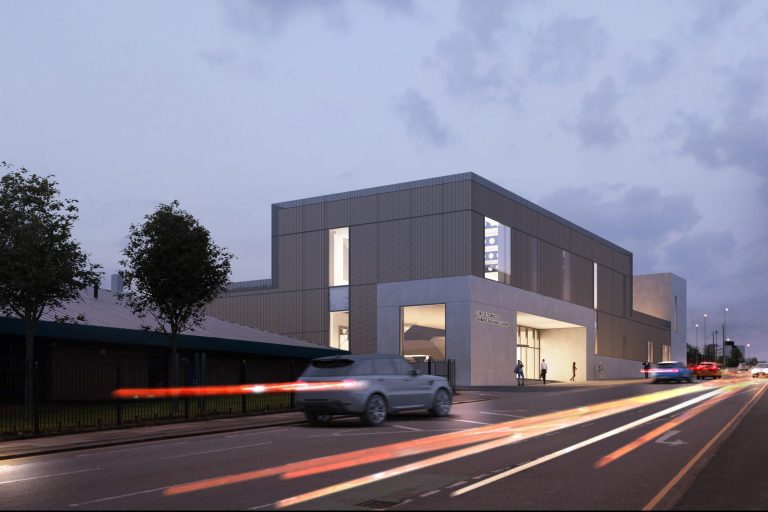Morgan Sindall Construction has been named by the University of Salford as the preferred bidder to build the North of England Robotics Innovation Centre. The new Robotics Innovation Centre is part of the £2.5 billion Crescent masterplan, a 240-acre major regeneration scheme being delivered by the University, Salford City Council and development partner, The English Cities Fund – a strategic joint venture between Muse Developments, Legal & General and Homes England – aimed at driving economic and social prosperity for the whole of the city over the life of the 20-year programme, through the delivery of spaces where people can live, work, relax and innovate. The Centre will enable the University’s robotics and automation specialists to expand their work with SMEs around the country to provide solution development, design, testing and validation of digital innovation. Disciplines covered by the development will include the dynamic and growing sectors of robotics for intelligent infrastructure, digital automation and supply chain improvement, as well as health, wellbeing and integrated care technologies. It was announced earlier this year that the £13 million North of England Robotics Innovation Centre will be part funded by the European Regional Development Fund. The project will deliver a new gateway building to the Innovation District and provides the University with a new and significant presence facing on to Frederick Road. The building is articulated with a z-shaped plan expressing a series of stacked laboratories in turn linked by a central feature stair representing the heart of the building. Externally a simple palette of materials is utilised ranging from precast concrete at lower levels to light perforated metal panels above. Construction work on the 22,580 square foot building is set to begin in early 2021. The close working relationship between the University and Morgan Sindall Construction has existed for a number of years. It was announced earlier this year that Morgan Sindall Construction is to build the £65 million Science, Engineering and Environmental Building (SEE Building) for the University, and since 2018 the partnership has been driven by a programme focused on enhancing the employability credentials of undergraduates, which looks to combine the latest academic understanding of industry trends and developments with real world experience and learning. This has been delivered through regular site visits, workshops and providing expert advice on project proposals for design, planning, costing and development to multi-disciplinary student teams. Shaun Jones, area director for Morgan Sindall Construction in Manchester, said: “The University of Salford’s masterplan reflects a bold vision both in terms of developing a transformational future for the city and by supporting the sectors that will drive the wider country forward. We’re proud to be part of that vision through our work delivering the SEE Building and now the North of England Robotics Innovation Centre. “Throughout the build programme, we plan to work closely with students, residents and community groups to ensure our growing presence on campus has benefits for the whole of Salford.” Georgina Harris, director of engineering at the University of Salford, said: “We are really excited about our new North of England Robotics Innovation Centre and the opportunity to work with Morgan Sindall Construction on its development. This new centre, that is part funded by the European Regional Development Fund, is to be the focus of our activities supporting local small to medium-sized enterprises in the development of their robotics and automation capabilities. “This facility could not be more timely as companies look to mitigate the impact of Covid-19 on their industries by making use of new technologies. We are delighted that Morgan Sindall Construction will be working with us to help us realise our ambitions in research, supporting our local businesses and providing opportunities for our students.” Tony Skipper, masterplanner and director of 5plus architects said: “We are delighted to be moving this project forward with Morgan Sindall Construction and the University of Salford. It will be one of the first projects to be delivered by the University within Salford City’s new Innovation District, conceived under the Salford Crescent and University Masterplan and as such the project represents a new chapter in the regeneration of the wider area. “We now look forward to continuing our work with the School of Science, Engineering and Environment and the contracting team to deliver this new exemplary facility.”






